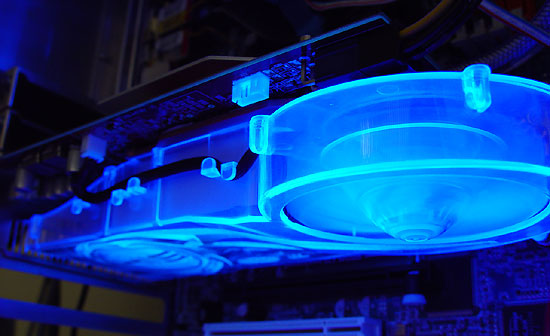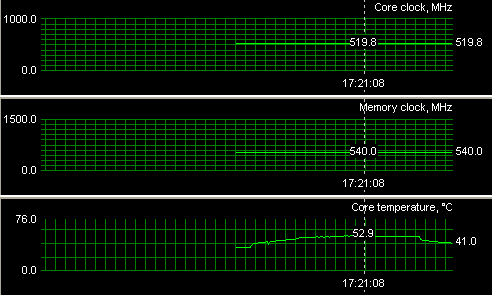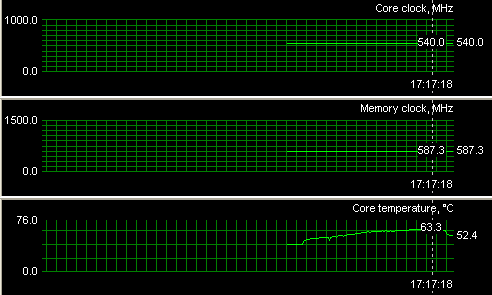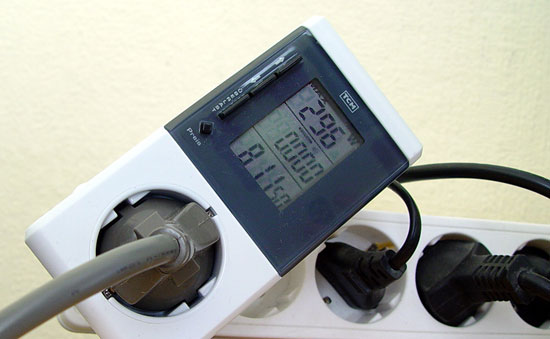Page 3
ICeQ II Cooling
I know that this text is getting a little standard with any HiS review, but hey it's the same cooler based on IceQ-II technology seen previously. So then, both the Radeon x850 XT and the x850 XT PE have the lovely IceQ II cooling technology.
The II of course refers to the newer model IceQ technology compared over the cooler that the HiS 9800 series used. The cooling solution itself actually is manufactured and designed by Artic cooling, that's not exactly a secret. The new models are UV reactive BTW, so spend a few bucks on some blacklight okay, the results are really nice.

Here we see that UV reactiveness at work
IceQ-II, despite having the size of a elephant, rocks. The IceQ-II cooling system uses the air inside your PC case and exhausts warm air outside the case, this is a huge plus as the videocards these days can get quite hot. With normal cooling heat will warm up the ambient temperature of your PC's inside and cascade the effect by warming up other components. The IceQ-II technology helps prevent this as that heat is exhausted outside the PC.
Based on the graphics core temperature the fan is rotating either faster or slower (RPM) to maintain noise levels acceptable. But to be honest, even when it's at 100% the noise is hardly noticeable. HiS states that this cooling will bring you an 11°C lower cooling temperature compared to the reference cooling solution. I dare to state it's even better then 11 Degrees C. When measuring the temperature at the back of the card on the x800 XL and x850 XT the GPU remained at sub 55 Degrees C at 100% GPU utilization. That's quite an accomplishment. The PE version was still amazingly cool at 62 Degrees C and that is a graphics core 100% at work.
Also part of IceQ-II technology is cooling the cards memory, in the photoshoot later on be sure to look at the backside as the memory on there is covered by a big metal shim.
Temperature wise the cooling design works quite well. At idle, normal operation expect ~42-45 Degrees C.

HiS Radeon x800 XL - 100% Stressed Graphics core temperature monitoring, Idle ~ 42 and only 54 Degrees C in 100% utilization.

HiS Radeon x850 XT- 100% Stressed Graphics core temperature monitoring, Idle ~ 42 and only 53 Degrees C in 100% utilization.

HiS Radeon x850 XT Platinum Edition- 100% Stressed Graphics core temperature monitoring, Idle ~ 44 and and 63 Degrees C in 100% utilization.
At every angle and any product HIS is looking good, we can see the cooling technique used working really well. Oh hey, I almost forgot. The plastic casing of the cooler is UV sensitive, quite lovely in a nice case-mod.
iTurbo Overclocking![]()
In the software bundle we also find a new overclocking tool that HiS developed over the past few months. It's the first time ever that they introduced it and I expect to see further development of this tool in upcoming products. Basically the idea is this, push a button and your card is overclocked within HiS defined limits. Both the x800 XL and standard x850 XT products can make use of this instant overlock.

After installing just click on the tray icon to startup iTurbo.
x800 XL - By pressing the iTurbo button within a flash the frequency of the core jumps from ATi's reference 398 MHz to 432 MHz and the memory from 493 to 500. Although that is not a massive overclock this will definitely bring the overall performance up.
x850 XT - By pressing the iTurbo button within a flash the frequency of the core of the x850 XT jumps from ATi's reference 520 MHz to 540 MHz and the memory from 1.08 to 1.18 GHz. Although that is not a massive overclock this will definitely bring the overall performance up and sets the XT version immediately at standard PE performance. The iTurbo software we received has passed its beta stages and is fully usable. It is very promising overclocking software. This is overclocking for the people that never do that, yet now they can in a safe and HiS certified manner. Usually I don't have anything good to say about included overclocking tools as the novice user can seriously damage a card, but this time, well let's just say that HiS did it right and they are one of the very few manufacturers out there that accomplished that.
iTurbo has a very good opportunity in becoming a substantial success as this is a really easy to use and well developed concept. In short, I like it. We'll show you the results in our overclocking part of this review.
I Demand Powerrrr![]()
What you also need to realize is you will likely require a new more capable power supply, as twice the fun equals twice your power bill.
The total power draw (peak) from the power supply unit was high though. With an Athlon 64 4000+ based system with two HD's, a DVD-Rom, 512 MB memory in-game the PC pulled a maximum of roughly 300 Watt, which is a new record on my end. This was with the Platinum Edition card, yet since the standard XT version clock as fast with the iTURBO software the power draw is similar. This was a peak maximum though. The x800 XL for that matter was way less power hungry with it's peak at 240 Watt. Again, this is the total power draw from the PSU, we are not talking about the graphics card alone, it is an accumulation.
So,
you need some reserves. So don't go thinking that a 350 Watt PSU is sufficient, buy a 400 Watts at the very minimum! Btw and before you go thinking, yeah right how on earth does he know that? Simple. We have a Wattage meter between the PC and the power outlet.
The total system PSU output peaked at a max of 296 Watt, that's the same usage as 5x60 Watts light-bulbs enabled in your room.
